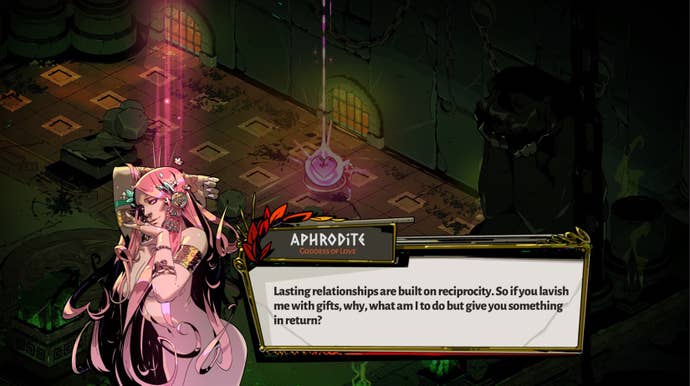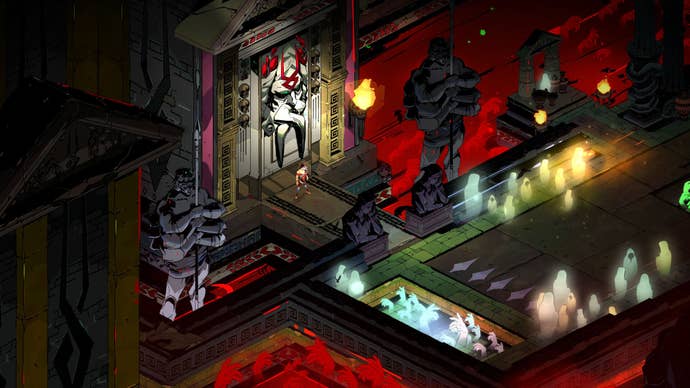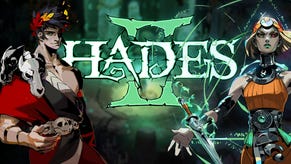It's not just the story: every single game developer can learn something from Hades' creative take on an underused mechanic
Don’t Hade the player…
The roguelike genre is a type of game that I have, honestly, neglected for most of my life. I know what I I like, after all, and I don’t see a Silent Hill roguelike happening any time soon. Despite having dabbled with The Binding of Isaac, Enter the Gungeon, and Downwell, something failed to click with me when it came to roguelikes. I later tried Hades, which appealed to me because of its vibrant visual style and cast of hot Gods and Goddesses, only to find that I didn’t quite gel with it either.
After the launch of Hades 2 into Early Access, and seeing a feminine protagonist — Melinoe — at the helm, I was all the more keen to give things a go again. I wanted to know what this magical game that my friends kept telling me I’d love was all about ; I really wanted to get it, to enjoy it as much as they did, and understand what it was all about.
I couldn’t start with Hades 2, though. I had 2018’s Hades to get through first if I wanted to know what Zagreus, Melinoe, and co. were all about, and that’s where my brief obsession with the game — and full conversion to being a roguelike lover — began. And it wouldn’t have kicked off at all without one underused mechanic: God Mode.
Now, before you start shouting at me for playing games on ‘journalist mode’ and whatever else, hear me out. Given my lack of experience with roguelikes, I was finding Hades particularly tough; I hated the Stygian Blade, I was quickly getting overwhelmed, and as a result, I was quickly getting frustrated and wanted to put it down, for good, after a couple of hours. My determination to persist and see why people loved Hades so much was much stronger than my frustrations, though — a real testament to how brilliant the game is — so I decided to use every resource available to me before giving up. Which is where God Mode comes in.
God Mode in Hades differs from how you would typically imagine God Mode to be. In Hades, it isn’t a permanent difficulty modifier that is intended to be used throughout the whole game. Think of it as putting the training wheels of a bicycle on, with the intention of taking them off when you’re finally ready to go hurtling down that hill without fear of what might happen.

With God Mode active, you are granted 20% damage resistance. This is bumped up by 2% every time you fail a run, and can reach up to 80% damage resistance. There is no way to reset this value without starting a new save file, so even if you turn the mode off and turn it on again later, your damage resistance will remain the same as what it last was. Soon enough, there comes a point where things are too easy, and it’s time to brave it alone.
God Mode gave me the opportunity to make meaningful progress with Hades without getting as frustrated as I was initially. I beat Megaera, finally, and started encountering her sisters, which was a pivotal moment of the game for me; the moment where I could say, “ah, I get it now”.
As soon as I’d stopped getting frustrated with the game, I had all the more room to actually understand what I was doing, and what my goals as Zagreus were. And soon enough, as my damage resistance ticked closer to 40%, my runs started becoming trivial. I’d finally gotten the hang of dipping and weaving between enemy attacks, became enamored with the Eternal Spear, and had gotten to know the Gods well enough that I knew which Boons would make any run a complete cakewalk. Don’t get me wrong, Theseus and the Minotaur could still f**k me up, but with God Mode as my trainer, I had little to get frustrated about any more. After all, every failed run is progress.

I knew that dying during a run was merely an opportunity for more of Zagreus’ growth as a character, be that via tangible upgrades or dialogue between him and other characters. Dialogue that in dozens of hours, has not yet once repeated itself.
Hades’ God Mode is something that everyone, and every developer, can learn from. It made a genre that I wasn’t all that comfortable with feel approachable, before later feeling second-nature to me. I could spend time learning everything I needed to at a steady pace, before God Mode made things too easy for me to continue as I was. Finally, I could remove my training wheels, and stab and smash my way all the way through to Hades with little trouble.
Having a God Mode that gradually makes things easier as you get better feels like an extensive training exercise. Supergiant Games clearly knows that any player can pick up its game and be good at it with the right knowledge to hand, but it also knows that some folk — like roguelike-convert me — might need just a little bit of help getting started.
And thanks to Hades’ God Mode, I now constantly have at least one roguelike on the go for me to wind down with; no training wheels necessary! I’ve yet to revisit The Binding of Isaac or Enter the Gungeon, but I now spend much of my time with fan-made Pokemon roguelike PokeRogue and puzzling card-based roguelike Card of Darkness, while I await Hades 2’s full launch.
Hades 2 is available in Early Access now, and it's making us all remember how good the first one is. Better yet, you don't really need to have played the first one if you want to jump into the sequel.









